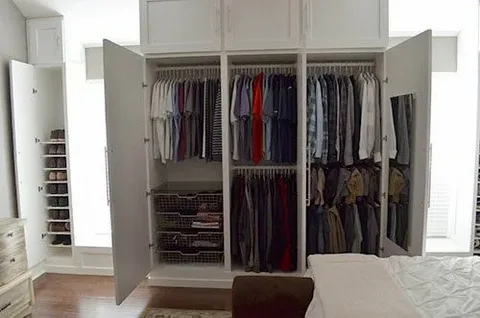Designing a wardrobe that perfectly suits your needs and style can transform your daily routine and maximize your space. Whether you have a walk-in closet or a compact bedroom wardrobe, The Ultimate Guide to Planning Your Custom Wardrobe Layout will help you create a functional and beautiful storage solution tailored just for you.
Why Plan a Custom Wardrobe Layout?
A custom wardrobe layout is not just about storing clothes—it’s about organizing your lifestyle. Pre-made wardrobes often fall short when it comes to fitting your specific needs, sizes, or fashion habits. With a custom plan, you can optimize space, improve accessibility, and add personal touches that reflect your style.
Step 1: Assess Your Space and Needs
Before diving into design ideas, evaluate the space available for your wardrobe. Measure the height, width, and depth accurately. Consider the types of clothes and accessories you have—long dresses, suits, shoes, handbags, or jewelry—and how much storage each requires. This assessment lays the foundation for The Ultimate Guide to Planning Your Custom Wardrobe Layout by ensuring your design fits your lifestyle perfectly.
Step 2: Choose the Right Wardrobe Layout Style
Custom wardrobes come in various layout styles including:
- Reach-in wardrobes: Ideal for small spaces with sliding or hinged doors.
- Walk-in wardrobes: Luxurious and spacious, allowing for more elaborate designs.
- Corner wardrobes: Perfect for utilizing awkward or unused corner spaces.
Selecting the right style helps you maximize your storage and makes your wardrobe easier to organize.
Step 3: Prioritize Functional Zones
Organize your wardrobe into zones based on your daily habits and clothing types. Some useful zones include:
- Hanging sections for long and short garments
- Drawers for underwear, socks, and accessories
- Shelves for folded clothes and bags
- Shoe racks or cubbies
- Dedicated jewelry or accessory trays
Creating these zones is an essential part of The Ultimate Guide to Planning Your Custom Wardrobe Layout because it improves efficiency and keeps your wardrobe tidy.
Step 4: Select Materials and Finishes
Your wardrobe’s materials and finishes affect not only its appearance but also its durability. Consider options like solid wood for a classic look, laminate for budget-friendly solutions, or glass doors to add a modern touch. Choose finishes and colors that complement your room’s decor for a cohesive look.
Step 5: Add Personal Touches and Lighting
Integrate elements that enhance usability and aesthetics, such as built-in lighting, mirrors, or pull-out trays. LED lighting inside shelves or hanging areas can brighten your wardrobe, making it easier to find what you need and adding a luxurious feel.
Final Thoughts
The Ultimate Guide to Planning Your Custom Wardrobe Layout empowers you to create a wardrobe that is both beautiful and highly functional. By carefully assessing your needs, choosing the right layout, and incorporating personal touches, you can build a storage space that fits your lifestyle perfectly. Whether starting from scratch or remodeling an existing closet, a custom wardrobe can revolutionize your everyday routine.

